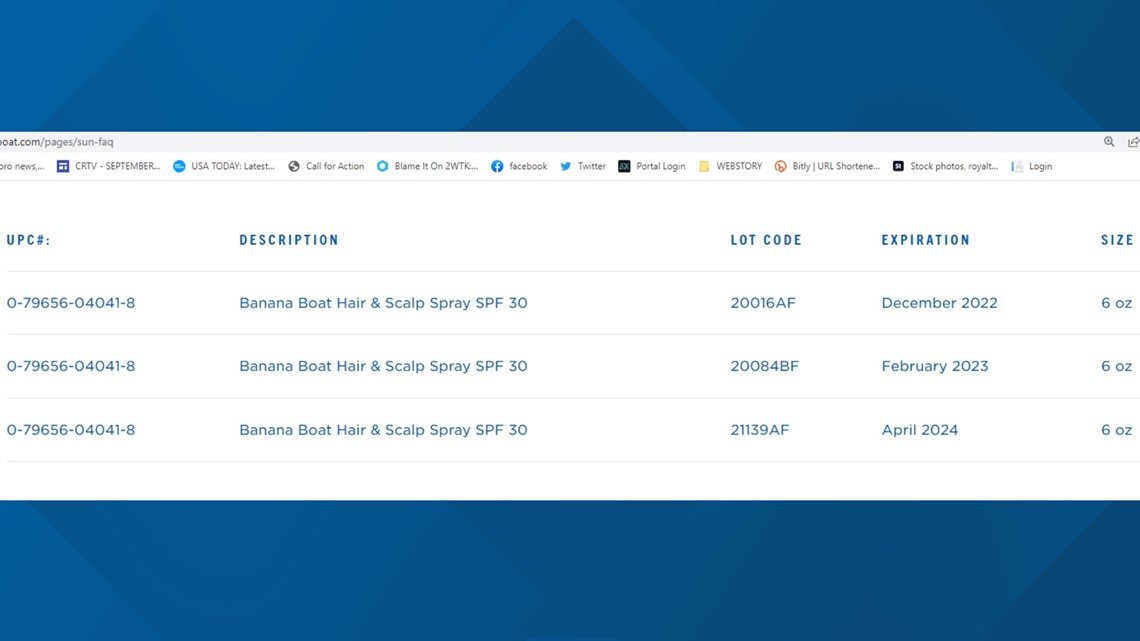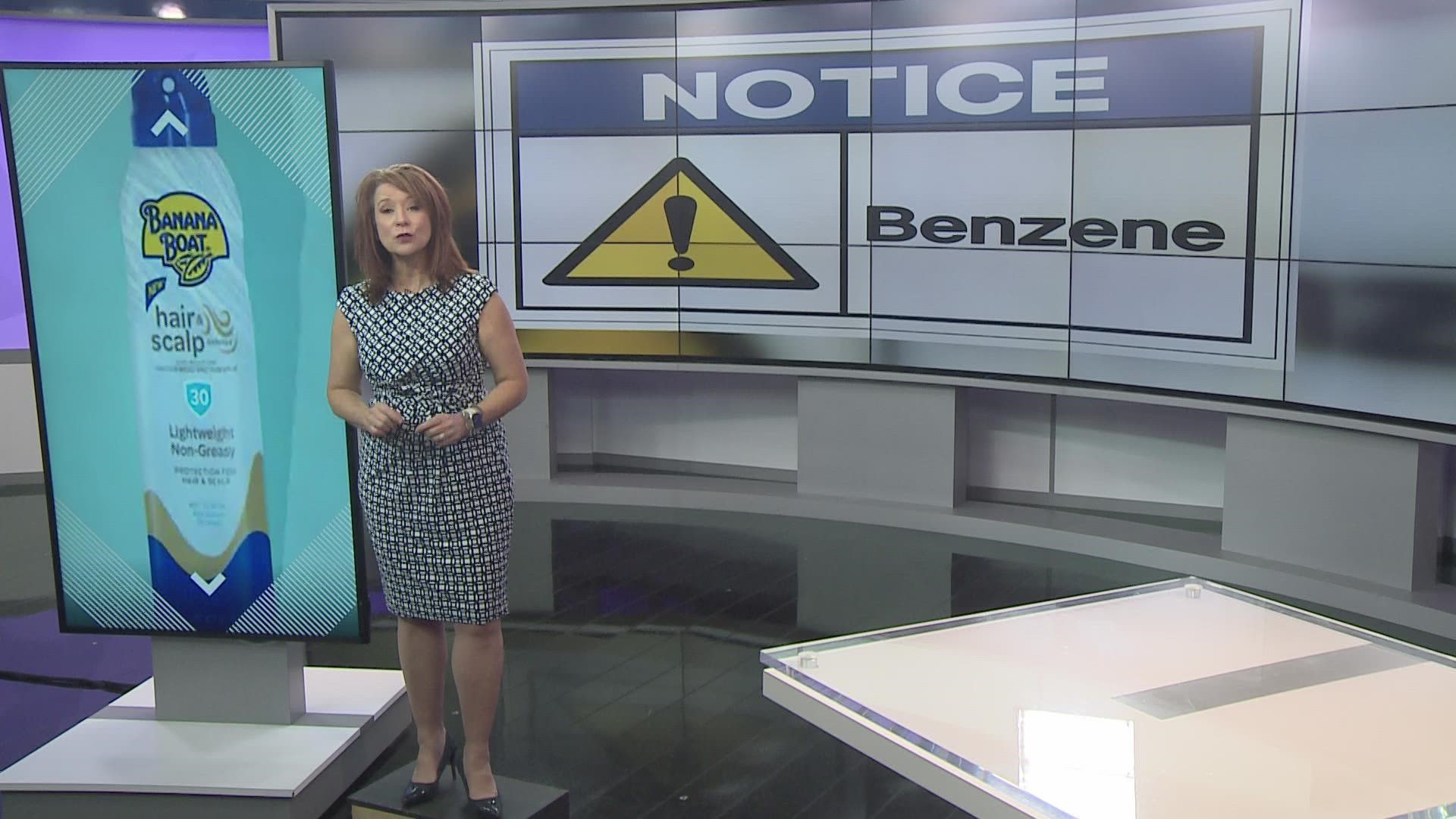GREENSBORO, N.C. — Another voluntary recall of sunscreen due to the cancer-causing chemical Benzene. The makers of Banana Boat are recalling three batches of its Hair and Scalp sunscreen.
What's strange about this recall is where the Benzene was found. Benzene is not a listed ingredient. Oftentimes, it finds its way into products.
In this case, trace amounts were found in the propellant that sprays the product out of the can. Benzene was not found in the sunscreen itself.
These three batches that are being recalled include:


No other products are impacted. If you have this product you want to stop using it right away. Banana Boat is reimbursing you. You can go online or call
Now, while I have you thinking of sunscreen. The one label that is most important to look for is “Broad Spectrum.”
"It means that the sunscreen will protect you against UVA rays, which are responsible for skin cancer and skin aging, and UVB rays, which are responsible for sunburn and contribute to skin cancer," said Tori Calvo of Consumer Reports.
Also important is “SPF,” which stands for sun protection factor and is a measure of how well a sunscreen protects against sunburn. An SPF 100 does not provide twice as much protection as an SPF 50.
Instead, SPF 100 blocks 99% of the sun's burning UVB rays, while SPF 50 blocks 98%and SPF 30 blocks 97%.
Sunscreens labeled “water resistant” mean they remain effective for the time stated on the bottle when you’re swimming or sweating.
Now, take words like “reef safe” and “sport.” Neither is a regulated term, and the same goes for “dermatologist tested.”
"Some of the terms you see on sunscreens are just for marketing purposes and may not mean what you think they do," said Calvo.
Remember that no matter which sunscreen you choose, what really matters is how you apply it. With lotions, you should use about a teaspoon per body part or area not covered by clothing, and for sprays, apply enough that your skin glistens, then rub it in.
One chemical some people worry about is oxybenzone, and you might see sunscreens labeled “no oxybenzone.” CR says that many sunscreens have been reformulated to no longer contain them.

